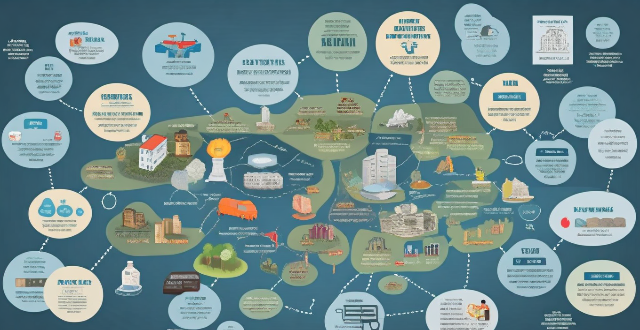This article compares the climate policies of developed and developing countries, highlighting differences in economic resources, technological capabilities, and political priorities. Developed countries have larger economies and more financial resources to invest in climate change initiatives, while developing countries face challenges due to limited financial resources. Technological capabilities also differ significantly, with developed countries possessing advanced technologies for renewable energy and emission reduction strategies, while developing countries lack such infrastructure. Political priorities also vary, with developed countries often prioritizing climate action, while developing countries may prioritize other pressing issues. The article concludes that international cooperation and support mechanisms are crucial for bridging these gaps and fostering a global response to climate change that is both equitable and effective.

Climate Policies: A Comparative Study between Developed and Developing Countries
Climate policies are the measures taken by governments to mitigate and adapt to the effects of climate change. These policies vary significantly between developed and developing countries due to differences in economic resources, technological capabilities, and political priorities. In this article, we will explore the key differences in climate policies between these two groups of countries.
Economic Resources
Developed Countries
Developed countries, such as those in North America and Europe, have larger economies and more financial resources to invest in climate change initiatives. They can afford to implement costly measures like renewable energy infrastructure, carbon capture and storage technologies, and green transportation systems. Additionally, they often provide substantial funding for research and development in clean energy technologies.
Developing Countries
On the other hand, developing countries face significant challenges in implementing effective climate policies due to limited financial resources. Many rely heavily on fossil fuels for energy production and lack the necessary infrastructure for renewable energy sources. As a result, their climate policies tend to focus on adaptation rather than mitigation, addressing the immediate impacts of climate change on agriculture, health, and water resources.
Technological Capabilities
Developed Countries
Developed countries possess advanced technological capabilities that enable them to develop and deploy innovative solutions to combat climate change. This includes not only renewable energy technologies but also smart grids, energy-efficient buildings, and electric vehicles. These countries also have the capacity to monitor and regulate emissions effectively through sophisticated monitoring systems.
Developing Countries
In contrast, many developing countries lack the technological infrastructure required for large-scale deployment of renewable energy sources or advanced emission reduction strategies. Their climate policies may focus on improving energy efficiency in existing systems, promoting sustainable land use practices, and enhancing resilience to climate impacts through community-based adaptation measures.
Political Priorities
Developed Countries
Climate change has become a prominent political issue in many developed countries, with public pressure driving governments to take action. As a result, there is often strong political support for ambitious climate policies aimed at reducing greenhouse gas emissions and transitioning to a low-carbon economy. International commitments, such as those made under the Paris Agreement, are typically taken seriously and integrated into national policy frameworks.
Developing Countries
While climate change is recognized as a global issue affecting all nations, developing countries often prioritize other pressing issues such as poverty alleviation, healthcare, and education over climate action. Climate policies in these countries may be less comprehensive and more focused on short-term survival needs rather than long-term environmental sustainability. However, many developing countries are increasingly vocal about the need for fairness in climate negotiations, seeking financial assistance and technology transfer from developed nations to help them meet their climate goals without sacrificing economic growth.
Conclusion
In conclusion, climate policies vary widely between developed and developing countries due to differences in economic resources, technological capabilities, and political priorities. While developed countries can afford to invest heavily in mitigation efforts and cutting-edge technologies, developing countries must often focus on adaptation and practical solutions within their means. It is crucial for international cooperation and support mechanisms to bridge these gaps and foster a global response to climate change that is both equitable and effective.